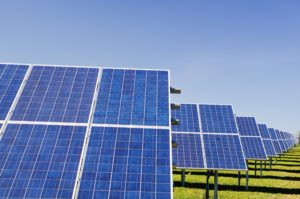 Renewable energy offers an enticing option — and understandably so. Conflict in the Middle East affects oil supply, environmental degradation inhibits new drilling sites, and increased carbon emissions drastically change global climate patterns. More and more, Americans consider other available fuel choices beyond the coal and gas relied on for centuries.
Renewable energy offers an enticing option — and understandably so. Conflict in the Middle East affects oil supply, environmental degradation inhibits new drilling sites, and increased carbon emissions drastically change global climate patterns. More and more, Americans consider other available fuel choices beyond the coal and gas relied on for centuries.
Renewable options such as solar, wind, and hydropower pose potential solutions to growing concerns surrounding fossil fuels. Only five states mine the coal for the rest of the country. Trains, trucks, and pipelines carry fuel thousands of miles for millions of consumers. But basic renewable infrastructures — specifically solar arrays and wind turbines — can be constructed in any state. The cost associated with solar and wind has dropped dramatically over the past few years, with solar reported as low as $.03 per kWh. So what’s holding the country back? Beyond politics, some significant hurdles face renewable options.
Because renewables face the laws of nature, they can be inconsistent. The sun doesn’t shine all day. The wind doesn’t blow all night. This leads to the need for storage solutions such as batteries for times of power source unavailability. The current grid infrastructure cannot handle such extreme storage flexibility by design. High-end batteries remain expensive and don’t last long enough to match current energy demand in the United States. And this form of energy storage doesn’t yet compete with today’s coal and gas plants that can fluctuate as needed with consumer demand throughout the day.
Private investors own most of the energy companies in the United States, creating an additional burden on the renewable industry. Private-sector investors must be willing to take on the financial risk associated with new technologies. One of the largest battery storage solutions is currently being constructed in the state of Texas to help balance out the contribution of renewables in the state’s electricity grid. But technologies such as better batteries for solar storage can’t improve without this economic gamble. On the individual level, residential solar panels come with an upfront sticker price of $10,000. The long-term savings more than make up for this investment, but this initial cost can turn the average consumer away. Americans, whether large corporations or small homeowners, thus hesitate to bet on renewables.
Renewable energy provides roughly 17% of the electricity generated in the United States. In Texas that number is even larger. In 2019 21.5% of Texas electricity came from renewable energy. Yet a fully renewable system remains a long way off. Let’s consider the final hurdle: change proves inconvenient. No system remains perfect, but the one already set up often lends itself more user-friendly.
 Even though wind farms and natural gas generators have increased in construction costs throughout the Country, solar photovoltaic systems have actually decreased in cost to make. This is according to the EIA, who say that “Since 2013, average costs for solar photovoltaic generators have fallen by 37%, wind by 13%, and natural gas by 4.7%.”
Even though wind farms and natural gas generators have increased in construction costs throughout the Country, solar photovoltaic systems have actually decreased in cost to make. This is according to the EIA, who say that “Since 2013, average costs for solar photovoltaic generators have fallen by 37%, wind by 13%, and natural gas by 4.7%.”